Reflection of Wave | Reflection of Wave At Denser and Rare Boundary
Reflection of the wave is a change in direction of the wave after hitting on a surface. The reflection of waves depends on the nature of the medium. When waves enter from one medium to another medium, if both media is the same then there will be no reflection in a wave.
And if the wave enters from a rare medium to a denser medium then there will be a reflection in a wave.
Reflection of wave
The waves produced by a source travel in all directions in the medium. The velocity of the wave remains constant in a medium, but when the wave comes across the boundary of two media, a part of it is reflected back while the remaining is transmitted to the second medium.
The reflected wave has the same wavelength and frequency but its phase may change depending upon the nature of the boundary. The bouncing back of a wave from the boundary of a medium is called the reflection of waves.
Reflection of Wave Denser Boundary
Consider a slinky spring (a loose spring that has a small initial length but a relatively large extended length), whose one end is tied to rigid support on a smooth horizontal table, and another end is free.
When a sharp jerk is given to the free end, a crest is produced at A which travels towards the fixed end. It exerts a force on a fixed end which acts as a denser medium. It exerts a reaction force on the spring in the opposite direction.
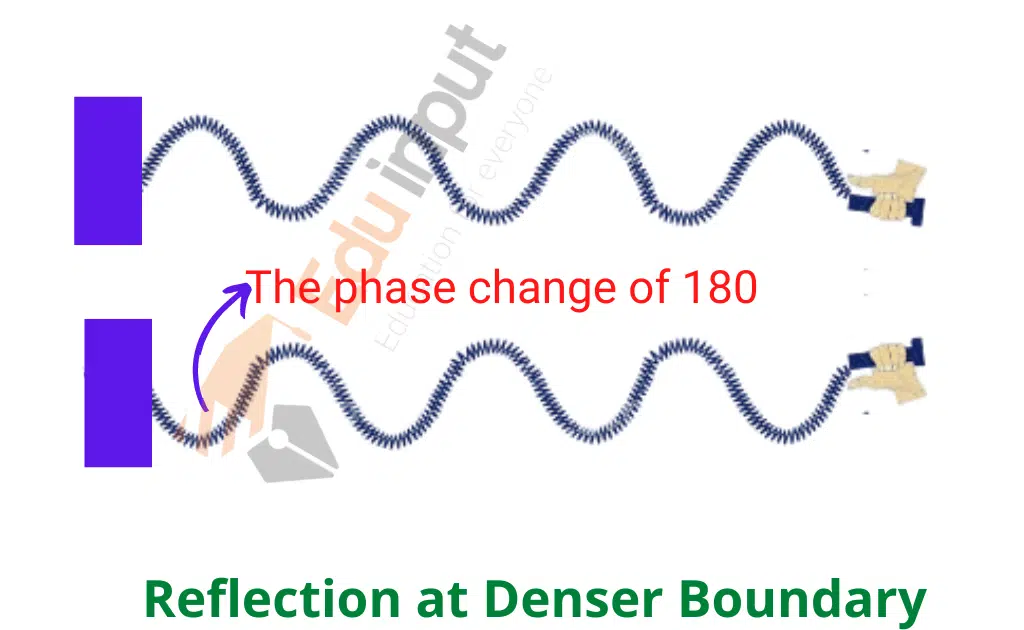
This force will produce displacement toward B and troughs will travels back towards A.
Thus it is concluded when a transverse wave traveling in a rarer medium encounters a denser medium, then its phase is reversed A crest is converted into a trough on reflection.
Reflection of the wave at Rarer Boundary
Consider a slinky spring whose one end is tied to a light string and the other end is tied to a rigid support. If spring is given a sharp jerk towards A, a crest travels along the spring.
When this crest reaches the spring string boundary, it exerts a force on the string towards side A. Since the string has a small mass as compared to spring, it does not oppose the motion of the spring.
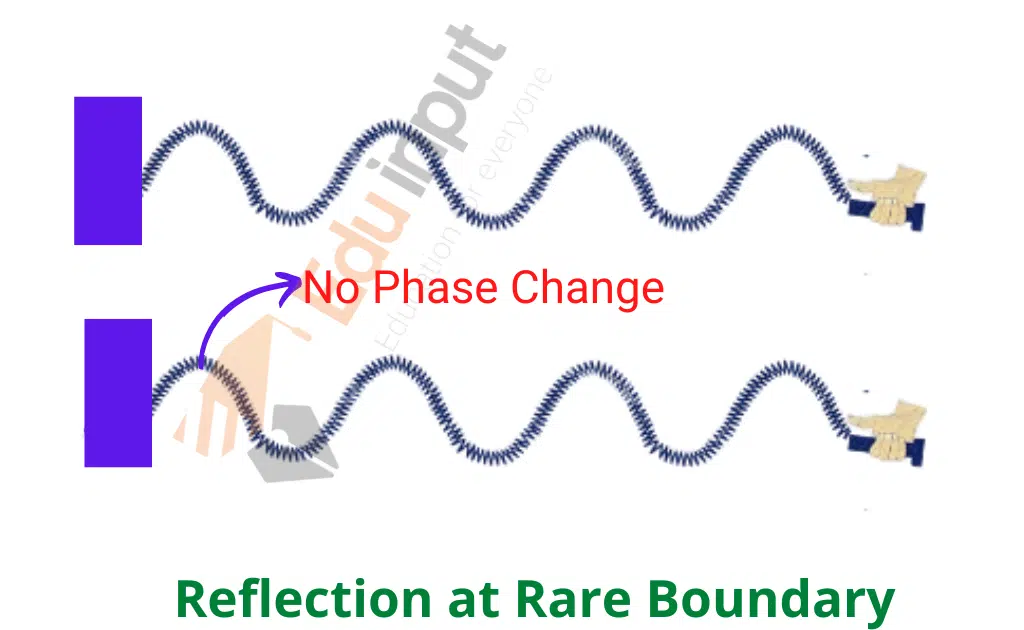
A crest is again created at the boundary of the spring string system which travels backward along the spring thus there is no change in phase from denser to rarer medium.
So the above conclusion can be written as
- If a transverse wave traveling in a rarer medium is incident on a denser medium it is reflected such that it undergoes a phase change of 180.
- If a transverse wave traveling in a denser medium is incident on a rarer medium it is reflected without any change in phase.


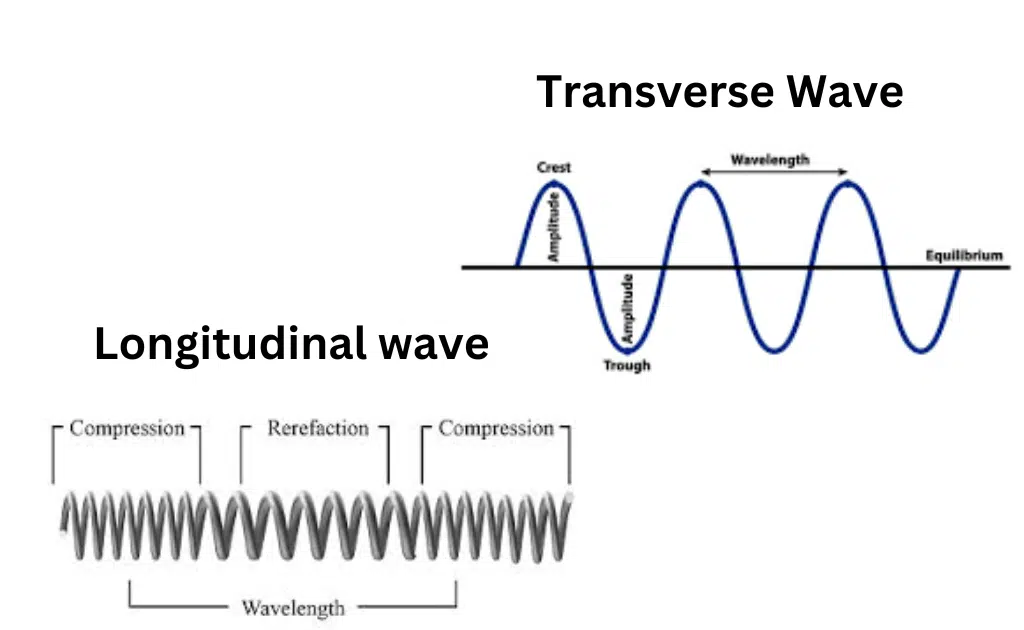
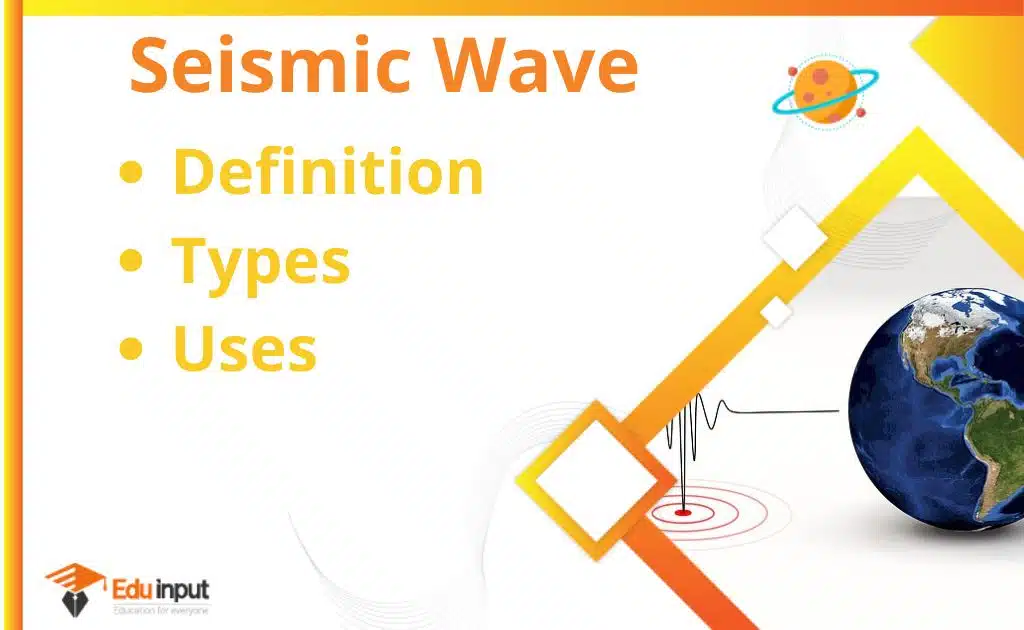
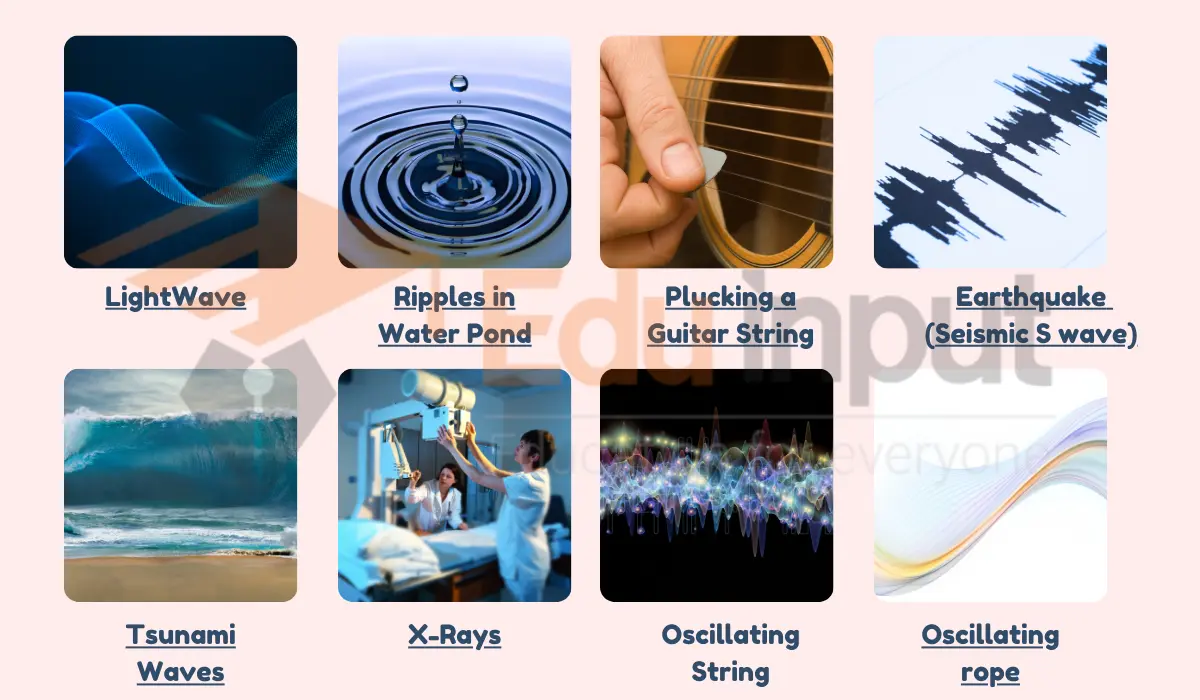


Leave a Reply